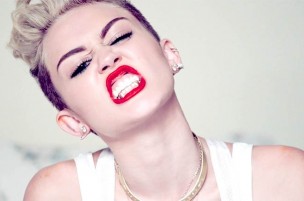I’m just going to preface this piece with this: I neither am now, nor will I ever be, truly invested in celebrity gossip. I’ve tried to ignore it, and for the most part, I’ve done a pretty good job.
But this Miley Cyrus debacle—something that has gone on throughout the entire summer, if not the better part of the past few years—has grown so immense that it has become unavoidable, like a black hole devouring up everything in its path. Frankly, her “We Can’t Stop” video and Video Music Awards (VMAs) performance have been covered so thoroughly that there can’t be much more for me to add. That being said, this marks the first time in a long while that celebrity news has gotten such immense mainstream coverage, and Miley has sparked some pretty interesting discussions about dozens of different artistic issues.
So what has she been trying to accomplish over the past few months? Clearly, she’s trying to move on past her more innocent, “Disney-fied” image, and onto something more adult and “contemporary.”
Cyrus’ VMAs performance left much to be desired. Regardless of the song quality, the performance’s set pieces were just odd. Even after the “We Can’t Stop” video, the giant teddy bears remain creepy and weird. The vocals were somewhat incoherent, and ultimately the outrageousness of the performance overtook every other aspect of not only Cyrus’ own presence, but arguably the entirety of the VMAs.
But here’s the problem with what she’s done versus what she wants: firstly, Cyrus has confused edginess and outrageousness. I am specifically talking here about her performance with Robin Thicke, who has caused well-deserved controversy in his own right, and her use of a foam finger. Cyrus’ performance jumped a step beyond “adult” and straight into “weird.”
Even if she had achieved what she wanted—to change her image—this would likely be a temporary solution to her problem. What happens when she wants to make another change five or ten years down the line? She’s cemented herself with this kind of performance even in an era defined by cultural fickleness.
This touches on another problem with Cyrus’ antics, and one that I’ve had with modern music for the past few years: It confuses public outrageousness with artistic expression. Let’s say Miley Cyrus was trying to make a grand statement; what in the world was it?
Still, this criticism isn’t specific to Miley Cyrus: When Lady Gaga showed up to the 2010 VMAs in a meat dress, or when Death Grips refused to perform at several concerts and instead chose to leave a fan’s suicide note on a screen for attendees, these artists suffer from the same delusion: that shocking people trumps expressing a clear message. Cyrus’ performance, still, isn’t unique in the pop culture universe. Artists have been attempting such performances for years. Still, she has done so publicly and has successfully created a media vortex that threatens to swallow her up.
Cyrus says she “can’t stop.” But maybe she should, if not just to figure out what her message is.
-
Kenneth J. DeVries
